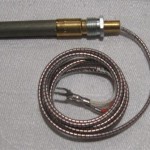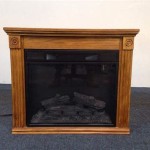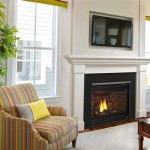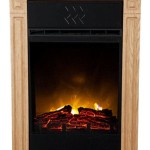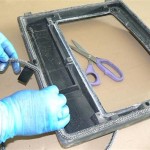Rustic Mantels For Fireplaces: A Guide to Natural Elegance
The fireplace, traditionally the heart of the home, offers warmth and a focal point for gathering. A well-chosen mantel enhances this central feature, adding character and style. Rustic mantels, in particular, bring a natural and time-worn aesthetic that complements a variety of interior designs. This article explores the characteristics, types, selection criteria, and installation aspects of rustic fireplace mantels.
Understanding the Rustic Aesthetic
Rustic design emphasizes natural materials, raw textures, and a sense of history. It often incorporates elements reminiscent of the outdoors, aiming to create a warm and inviting atmosphere. Imperfections, such as knots, cracks, and variations in color, are not only accepted but celebrated as features that contribute to the unique character of each piece. Rustic mantels embrace this philosophy, utilizing reclaimed wood, stone, or other natural materials to achieve a distinctive look. The goal is to evoke a sense of the past and a connection to nature, fostering a feeling of comfort and authenticity within the living space.
The appeal of a rustic mantel lies in its ability to add depth and visual interest to a fireplace. Unlike sleek, modern designs that prioritize uniformity, rustic mantels showcase the inherent beauty of the materials from which they are crafted. This can range from the distinct grain patterns of aged wood to the rough texture of hand-hewn stone. The natural variations present in these materials create a one-of-a-kind focal point that is both visually striking and emotionally resonant.
Furthermore, the rustic aesthetic is incredibly versatile. It can be seamlessly integrated into various interior design styles, from traditional farmhouse to contemporary industrial. Depending on the specific materials used and the finishing techniques employed, a rustic mantel can either blend subtly into the background or stand out as a bold statement piece. This adaptability makes rustic mantels a popular choice for homeowners seeking to add a touch of character and warmth to their living spaces.
Types of Rustic Mantel Materials
The material selection for a rustic mantel profoundly impacts its appearance, durability, and overall aesthetic. Several popular options exist, each with distinct characteristics and suitability for different design preferences.
Reclaimed Wood: Reclaimed wood, sourced from old barns, factories, or other structures, is a common choice for rustic mantels. It offers a rich history and unique character, often displaying nail holes, saw marks, and other signs of its previous life. These imperfections add to the mantel's authenticity and create a sense of timelessness. The type of wood used can vary widely, including oak, pine, maple, and other species, each offering its own unique grain patterns and coloration. Reclaimed wood mantels are often finished with a clear sealant to protect the wood while preserving its natural appearance.
Solid Wood Beams: Solid wood beams, often substantial in size, provide a robust and visually striking mantel option. These beams can be sourced from newly harvested trees or reclaimed materials. They typically feature a rough-hewn or distressed finish to enhance their rustic appeal. The size and weight of solid wood beam mantels necessitate careful consideration of the fireplace structure to ensure adequate support. Species like cedar, redwood, and douglas fir are frequently used for their durability and aesthetic appeal.
Stone: Stone mantels evoke a sense of permanence and natural beauty. Options range from rough-cut fieldstone to more refined limestone or granite. Stone mantels can be custom-built to fit specific fireplace dimensions and design preferences. The natural variations in color and texture within the stone create a unique and visually captivating focal point. Installation of stone mantels typically requires professional expertise due to the weight and complexity of the material.
Live Edge Wood: Live edge wood mantels showcase the natural, unedited edge of the tree from which they were cut. This design highlights the organic shape and character of the wood, creating a truly unique and eye-catching mantel. Live edge mantels are often paired with a clear finish to emphasize the natural beauty of the wood grain and edge. This option is particularly well-suited for those seeking a truly organic and nature-inspired aesthetic.
Selecting the Right Rustic Mantel
Choosing the right rustic mantel requires careful consideration of several factors, including the fireplace dimensions, the overall room design, and the desired aesthetic. A well-chosen mantel will complement the fireplace and the surrounding space, enhancing its visual appeal and creating a cohesive design.
Size and Proportions: The mantel's size should be proportional to the fireplace opening and the overall size of the room. A mantel that is too small will appear insignificant, while one that is too large can overwhelm the space. Measure the width and height of the fireplace opening, as well as the distance from the floor to the top of the firebox, to determine the appropriate mantel dimensions. Consider the depth of the mantel as well, ensuring it is not too shallow or too deep for the space.
Style and Design: The mantel's style should complement the overall design of the room. Consider the existing furniture, wall colors, and architectural details when selecting a mantel. A rustic mantel can be integrated into various design styles, from traditional to contemporary, but it is important to choose a style that harmonizes with the existing decor. For instance, a rough-hewn reclaimed wood mantel might be suitable for a farmhouse-style living room, while a more refined stone mantel could complement a modern rustic space.
Finish and Color: The finish and color of the mantel should complement the surrounding fireplace materials and the overall color palette of the room. Consider the color of the brick, stone, or tile surrounding the fireplace when selecting a mantel finish. A natural wood finish can showcase the wood grain and add warmth to the space, while a whitewashed or distressed finish can create a more weathered and vintage look. The color of the mantel should also complement the wall colors and other decorative elements in the room.
Safety Considerations: When selecting a mantel, it is crucial to consider safety regulations and clearances. Building codes often specify minimum distances between the mantel and the firebox opening to prevent overheating and fire hazards. Ensure that the mantel you choose meets these safety requirements and that it is installed properly to prevent any potential risks. Consult with a qualified professional to ensure that the mantel is installed safely and in compliance with local building codes.
Budget: Rustic mantels can range in price depending on the materials used, the size, and the complexity of the design. Establish a budget before starting your search to narrow down your options and prevent overspending. Reclaimed wood mantels may be more expensive than those made from new lumber, while stone mantels typically require professional installation, which can add to the overall cost. Consider your budget when selecting a mantel and explore different options to find the best value for your money.
Installation Considerations
Proper installation is paramount for the safety and longevity of a rustic fireplace mantel. Depending on the material and weight of the mantel, professional installation might be necessary. Careful planning and adherence to building codes are essential to ensure a secure and aesthetically pleasing result.
Structural Support: The weight of the mantel dictates the necessary structural support. Heavy mantels, such as those made of solid wood beams or stone, require robust support to prevent sagging or collapse. This may involve reinforcing the existing fireplace structure or adding additional support brackets. It is crucial to consult with a structural engineer or experienced contractor to assess the load-bearing capacity of the fireplace and determine the appropriate support methods.
Clearance Requirements: Maintaining proper clearance between the mantel and the firebox opening is essential for safety. Building codes specify minimum distances to prevent overheating and fire hazards. Consult local building codes and regulations to determine the specific clearance requirements for your fireplace. Ensure that the mantel is installed at the correct height and distance from the firebox to comply with these regulations.
Attachment Methods: The method of attaching the mantel to the fireplace will depend on the material and weight of the mantel, as well as the construction of the fireplace. Options include using heavy-duty screws, bolts, or construction adhesive. For heavy mantels, it may be necessary to use embedded steel rods or brackets to provide additional support. Ensure that the attachment method is appropriate for the mantel material and that it provides a secure and stable connection to the fireplace.
Professional Installation: Installing a rustic mantel can be a complex and challenging task, especially for heavy or custom-built mantels. If you are not comfortable with DIY projects or if you are unsure about the structural integrity of your fireplace, it is best to hire a qualified professional. A professional installer will have the expertise and tools to ensure that the mantel is installed safely and correctly, in compliance with local building codes.

Distinctive Rustic Fireplace Mantel With Legs And Inside Denmark

Pin By Trisha Vallee On Home Rustic Fireplace Mantels Fireplaces

10 Rustic Fireplace Mantel Ideas Blog Red Door

Diy Rustic Mantel Farmhouse Fireplace Decor Farm House Living Room

Wood Fireplace Mantels Reclaimed Barn
:max_bytes(150000):strip_icc()/sandandsisal-bdc76ad938a44d28ae9e23ef6c9fa331.jpg?strip=all)
17 Diy Fireplace Mantel Plans

Evermark Expressions 4 Ft Farmhouse Alder Stain Grade Wood Shelf Mantel Fmhsa 48mtl The Home Depot

Custom Made Fireplace Mantel Hand Hewn Rustic Barn Beam Farmhouse Country

Reclaimed Wood Mantel Elmwood Timber

Distinctive Rustic Fireplace Mantel With Legs And Inside

